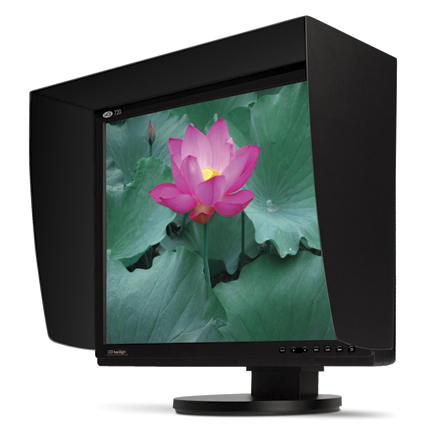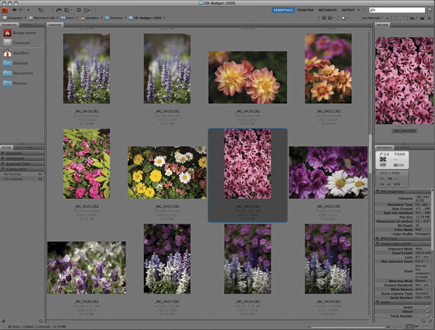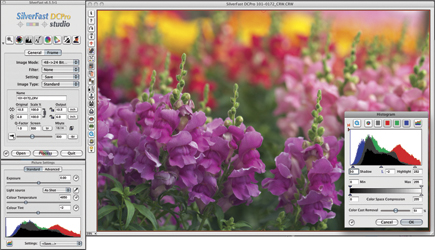The LaCie 700 Series LCD Displays; Color Performance Personified
LaCie recently began offering a new set of high-performance LCD displays, dubbed their 700 Series. First of all, the screens are high-performance, fine-resolution displays like few I have tested and reviewed. The 700 Series has two features which add immensely to the character and perceptual quality of the color images displayed. Most LCD display screens available today utilize a set of CCFL tubes as the backlight source, but the 700 Series instead uses LEDs as the light source.
 |
|
 |
|
|
Unlike a few recent new model LED backlit screens that employ all-white emitting LEDs, these models have LEDs that are red, green, and blue. Generally, this expands the limited and uneven color content of a white light source, making the color content larger and more even in intensity between all portions of the visible color spectrum. Without getting too deep into technological ideas and language, the color gamut of these new LaCie 700 Series displays is much wider than even Adobe RGB (1998), and, in the case of the 720 display I tested, is 114 percent, and is 123 percent of Adobe RGB in both the 24 and 30” 700 Series LaCie displays.
These days, when you go to Staples or a similar store there is a large selection of new, affordable PC computers for sale. Most have wide format, new model LCD displays. Pick one up and take a closer look; it will be very much lighter and with fewer adjustments than what was sold just a couple of years ago. In other words, the lower prices are the result of reducing the LCD displays’ frames and stands, making the products less costly to ship to America from Asia. The new LaCie 700 Series displays are mounted in very solid frames and on traditional full adjustment stands. They are the standard of basic quality one should expect from a serious product.
In addition to very high LCD screen resolution and a very wide color gamut, with smooth, even backlight from LED sources, the overall screen image quality of the LaCie is backed up with their own sophisticated LaCie blue eye adjustment, calibration, and profiling software and an advanced X-Rite model display sensor. Finally, the package is made complete with a very solid and effective LaCie easyHood that will keep stray room light off the screen.
 |
|
 |
|
 |
|
|
Current models run around $2000 (check prices for current models in this series at: www.lacie.com) and that’s more than I personally can afford, even though that price includes software, a colorimeter, and a hood. Yet, there was something intriguing about the unit and associated accessories that I wanted to investigate.
Using The Extreme Performance LCD Display
I asked for the smaller 20” model LaCie 720 RGB-LED LCD display for my tests, mostly because I use 20”-sized displays for all of my digital photographic work; it is a very high resolution to screen size display. (Editor’s Note: This model size has since been discontinued, but other models share the same attributes of the 20”.) It took about 5 minutes to get it hooked up, then it was just a matter of adjusting the display to my working standards. I chose a white luminance of 90.0 CD/m2, a gamma of 2.2, and a color temperature of 6500K. Once set up and profiled, the basic display screen looked just like the one it replaced with one resounding exception—the on-screen color was deep and brilliant compared to what I had been used to. This became even more dramatic when I compared the on-screen color saturation of many digital photo images displayed with Photoshop using the Adobe RGB (1998) workspace profile to the same image displayed in the monitor color space. In short, the image can be much more saturated in monitor color space than when the gamut is limited by the Adobe RGB color profile. I saw 100 percent of the color in the image file displayed on screen, which could then be sent to the printer and other output venues.
In addition to the profoundly full color of digital photographic images, the contrast, sharpness, and evenness of the display reproduction from corner to corner is as good as I have seen with the best of the scanners I have tested and reported upon. For an LCD display that reproduces such high color and uses RGB-LED backlight, you really cannot use any of the popular, top-line color sensitometers like X-Rite’s i1 display or Datacolor’s Spyder3 and obtain ideally accurate color profiling. That’s because the sensitometer requires a different kind of filtering to deal with the RGB-LED illumination characteristics and very saturated color reproduction.
 |
|
|
- Log in or register to post comments

















































